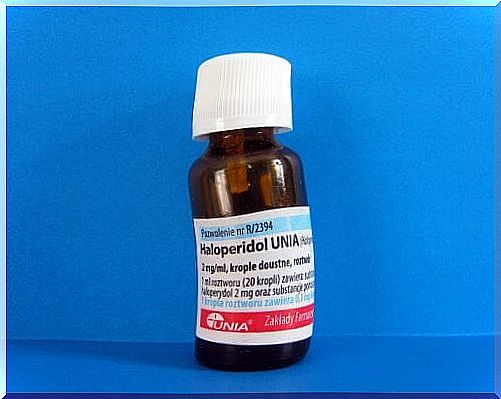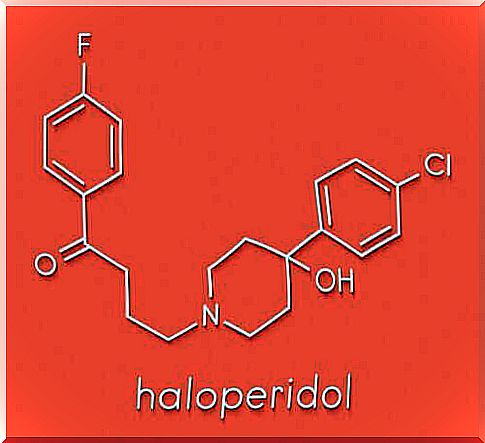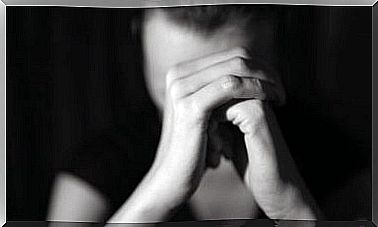Haloperidol: What Is This Medicine Used For?

Haloperidol is an antipsychotic or neuroleptic drug. It belongs to the group of butyrophenones. Paul Janssen discovered this drug in 1958. It is now one of the typical antipsychotics. It is therefore useful in treating the positive symptoms of schizophrenia. Some of these symptoms are, for example: hallucinations, delusions or agitation.
It is a central nervous system depressant with a sedative effect. It causes powerful motor sedation. This effect is used to combat states of agitation and aggression.
What is haloperidol used for?
Haloperidol has many distinct indications in its technical data sheet. It can be used in adults and children. It is generally used as an antipsychotic in the treatment of schizophrenia and in other psychotic or restless states.
In adults over 18 years of age, haloperidol is indicated for the treatment of:
- Schizophrenia
- Confusion syndrome that does not respond to drug-free therapy
- Manic episodes associated with bipolar disorder
- Psychomotor agitation associated with psychotic disorders
- Aggression and psychotic symptoms in patients with dementia (Alzheimer’s or vascular dementia)
- Tics that don’t respond to other treatments. Gilles de la Tourette syndrome is included here
- Huntington’s chorea that does not respond to another type of treatment

In pediatric patients, it is only used if other treatments do not work or cannot be applied. In these cases, haloperidol is indicated for:
- Schizophrenia in adolescents aged 13 to 17
- Aggression in children and adolescents aged 6 to 17 with autism or developmental disabilities
- Tics – Gilles de la Tourette syndrome included – in children and adolescents aged 10 to 17 years
Haloperidol is also being studied for the prevention of delirium. Low doses of this medication appear to be helpful in reducing the incidence of delirium in high risk patients and in those who are going to be operated on.
Haloperidol is also used for the prevention of nausea and vomiting. It is useful when these occur after an operation or are combined with chemotherapy. Several studies claim that it is effective and safe under these conditions.
Action mechanism
Haloperidol is a potent dopamine receptor antagonist. It works by nonselectively blocking central D2 receptors. It also has weak antagonist activity on alpha-1 adrenergic receptors.
By blocking the dopamine pathway, it lowers excess dopamine in the brain. Thus, haloperidol suppresses delusions and hallucinations. It also produces some psychomotor sedation, which is useful in some of its indications.
Side effects
Haloperidol, like almost all psychotropic drugs, has a number of unwanted effects. These are generally linked to its mechanism of action. In fact, the majority of adverse reactions to haloperidol come from blocking dopamine in other systems. The most common side effects are:
- Extrapyramidal disorder
- Insomnia
- Agitation
- Hypercinesia
- Headache
Other less frequent adverse reactions which may nevertheless appear are:
- Psychotic disorder
- Depression
- Increased weight
- Tremors
- Hypertonia
- Orthostatic hypotension
- Dystonia
- Drowsiness
- Urinary retention
- Erectile dysfunction
- Rashes
- Nausea and vomiting
- Visual deterioration

Its use is not recommended at the same time as other antipsychotics. The intensity of the adverse reactions could indeed increase and the extrapyramidal effects could be reinforced.
A serious adverse reaction that can occur is neuroleptic malignant syndrome. It is not very common but it is better to be aware of this effect so that it can be detected in time. It usually occurs at the very start of treatment and causes muscle stiffness, high fever, arrhythmia, etc. In this case, it is very important to follow the doctor’s recommendations. The latter is responsible for the treatment and must assess its effectiveness as well as its possible risks.
Treatment should start with a low dose. It can then be gradually increased according to the patient’s response and needs. The benefits of treatment should be evaluated periodically. Also, to avoid side effects, the dose should always be as low as possible.
Special care should be taken when haloperidol is used in elderly patients and in children. In these cases, the dose should be adjusted and any possible adverse effects that may appear.










